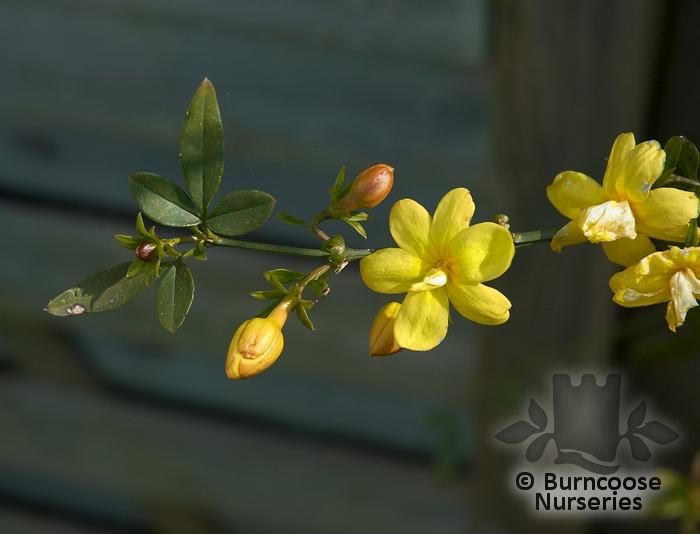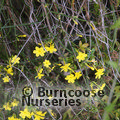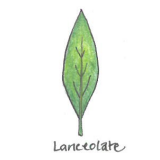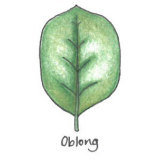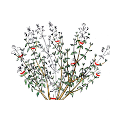Plants by mail order since 1984, over 4100 plants online today
Nursery & Gardens open: Mon - Sat 8:30 - 17:00 & Sun 10:00 - 16:00
Pop up café: open weather dependent
- Shop Now
- Burncoose Specialities
- This Month
- Offers & Promotions
- RHS Chelsea Flower Show 2024
- 40 years at Burncoose
- Engage With Us
- Information, Help & Advice
- About Us & Our Services
- Terms & Conditions
- Log In / Register

JASMINUM mesnyi
Commonly known as Jasmine, Primrose jasmine
Bright yellow semi-double flowers. Best grown on a warm, sheltered site
Further Reading....
-
EvergreenOpposite, glossy, deep green leaves with 3 oblong to lance-shaped leaflets 3-7cm (1¼-3in) long.
-
 Yellow
Yellow -
 Height3m (10ft)
Height3m (10ft) -
 Spread2m (6½ft)
Spread2m (6½ft) -
ClimberSome of these climbing plants will need trellis or wire supports if grown on walls or fences. Other grow aerial roots and are self-clingingTall, open, slender-stemmed shrub which acts like a climber when grown with support Produces usually semi-double flowers 3-4.5cm (1¼-1¾in) across, singly or in small clusters.
-
 Half hardy - unheated greenhouse / mild winterHardy in coastal and relatively mild parts of the UK except in severe winters and a risk from sudden (early) frosts. May be hardy elsewhere with wall shelter or good micro-climate. Likely to be damaged or killed in cold winters. Plant can withstand temperatures down to -5°C (23°F)
Half hardy - unheated greenhouse / mild winterHardy in coastal and relatively mild parts of the UK except in severe winters and a risk from sudden (early) frosts. May be hardy elsewhere with wall shelter or good micro-climate. Likely to be damaged or killed in cold winters. Plant can withstand temperatures down to -5°C (23°F) -
 Full sun
Full sun -
 Partial shade
Partial shade
JASMINUM mesnyi
-
Additional Features
 Good to knowCan be pruned back to strong buds annually after flowering
Good to knowCan be pruned back to strong buds annually after flowering Pests & DiseasesAphids, mealybugs
Pests & DiseasesAphids, mealybugs Place of originSouthwestern China
Place of originSouthwestern China -
Flower ShapeSemi-doubleTwo rows of petals with conspicuous stamens
-
HardinessFrost hardy (down to -5)
-
Leaf form
 Pinnate
Pinnate(see photos above) -
Leaf shape
 Lanceolate
Lanceolate(see photos above)  Oblong
Oblong(see photos above) -
Pruning group
 Pruning group 2Suitable for: Deciduous shrubs and trees that flower in Spring or early Summer on previous year's growth, including plants that produce new growth at or near ground level.
Pruning group 2Suitable for: Deciduous shrubs and trees that flower in Spring or early Summer on previous year's growth, including plants that produce new growth at or near ground level.
Pruning: Prune flowered shoots to strong buds. Cut back approximately 1/4 of old shoots to the base to promote replacement growth.
When: Annually, after flowering.
-
Seasonal InterestSpring
-
Soil ConditionsFertile well drained soil
Jan
Feb
Mar
Apr
May
Jun
Jul
Aug
Sep
Oct
Nov
Dec
Jasmine - Care Guide
Useful extras...

Fertilisers & Feeds - Vitax
Q4 Pelleted Fertiliser
A useful fertiliser suitable for use on a wide variety of plants. Q4 provides all the nutrients and trace elements essential for vigorous growth, abundant flowering and ripening of fruit.
3 options from £6.00
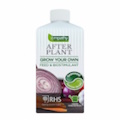
Fertilisers & Feeds - Empathy
Afterplant - Grow Your Own
AFTER PLANT GROW YOUR OWN seaweed is ready to use liquid concentrate that was specially formulated be used on all edible plants.
Only £8.00

Fertilisers & Feeds - Empathy
Afterplant - Tomatoes
AFTER PLANT TOMATO FEED Liquid Concentrate with Bio stimulant is a high potash liquid concentrate containing seaweed extract, plant derived amino acids and other nutrients specifically formulated to benefit tomatoes and greenhouse plants.
Only £8.00

Fertilisers & Feeds - Empathy
Rootgrow mycorrhizal fungi
Recommended by the RHS. Contains Rootgrow™ mycorrhizal fungi. Suitable for all trees and shrubs (except rhododendrons, azaleas, heathers, cranberries and blueberries)
3 options from £3.00

Fertilisers & Feeds - Empathy
Rootgrow Ericoid mycorrhizal fungi
This specially adapted Rootgrow™ mycorrhizal fungi will boost the growth of acid-loving plants like rhododendrons, azaleas, heathers and blueberries.
It contains ericoid and arbuscular mycorrhizal fungi, which are found in poor acidic soils where ericaceous plants naturally grow.
Only £7.50

Fertilisers & Feeds - Empathy
All-purpose Seaweed Stimulant
All-purpose organic concentrated seaweed feed that is a ready to use, derived from sustainable harvested kelp, that can be used on all outdoor and indoor plants, except acid loving plants.
Perfect used in conjunction with Rootgrow™.
Only £7.50


